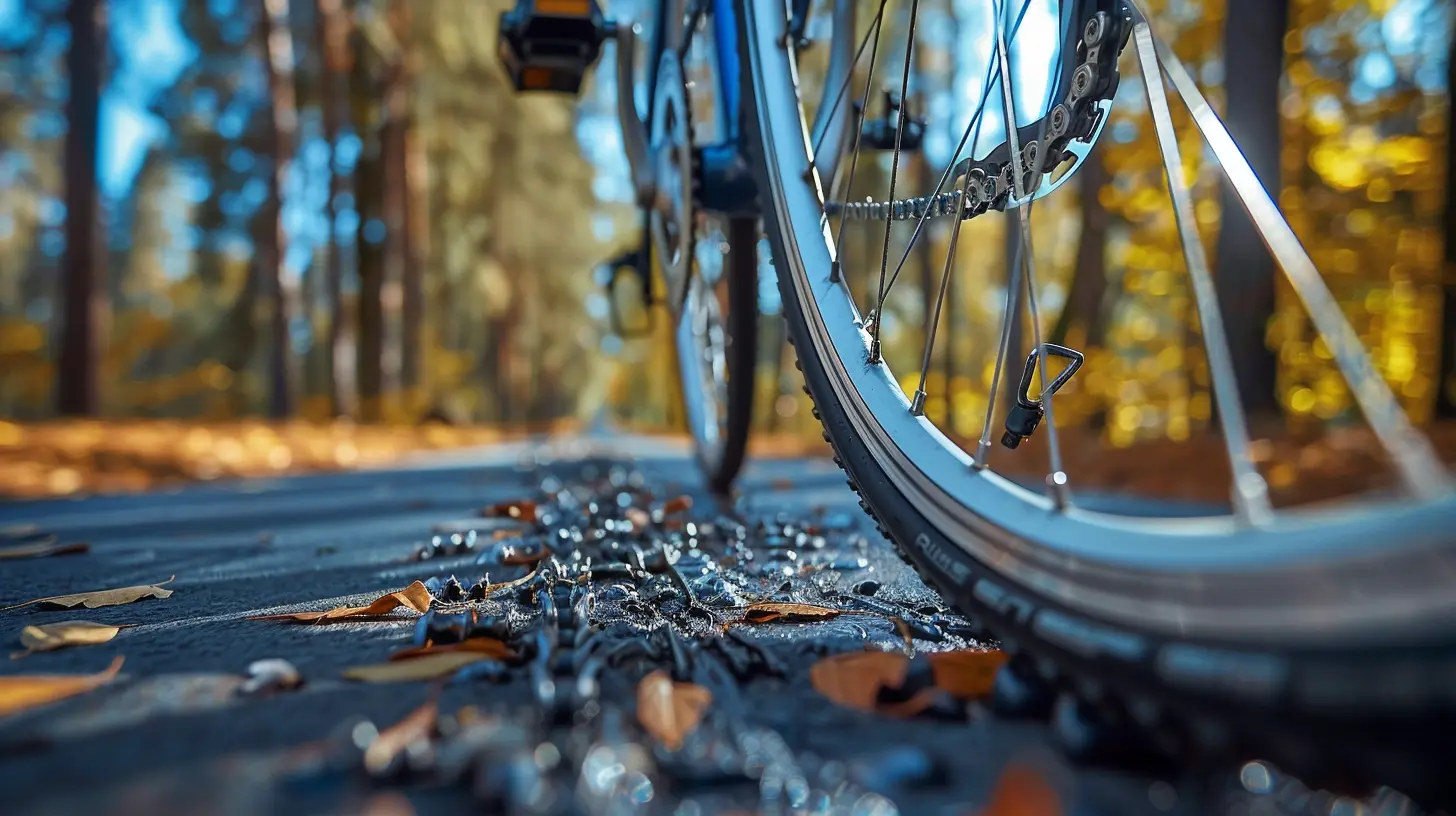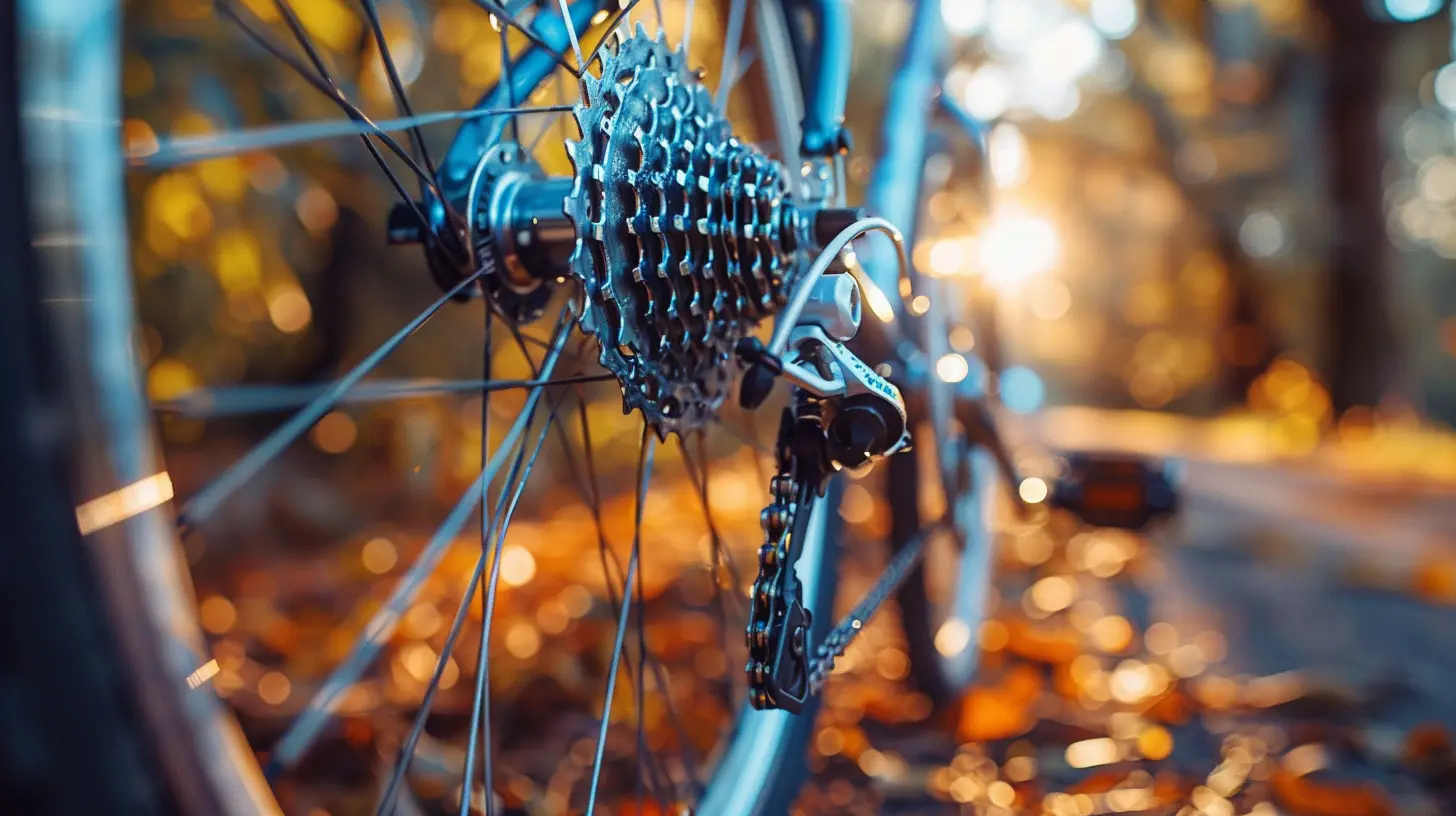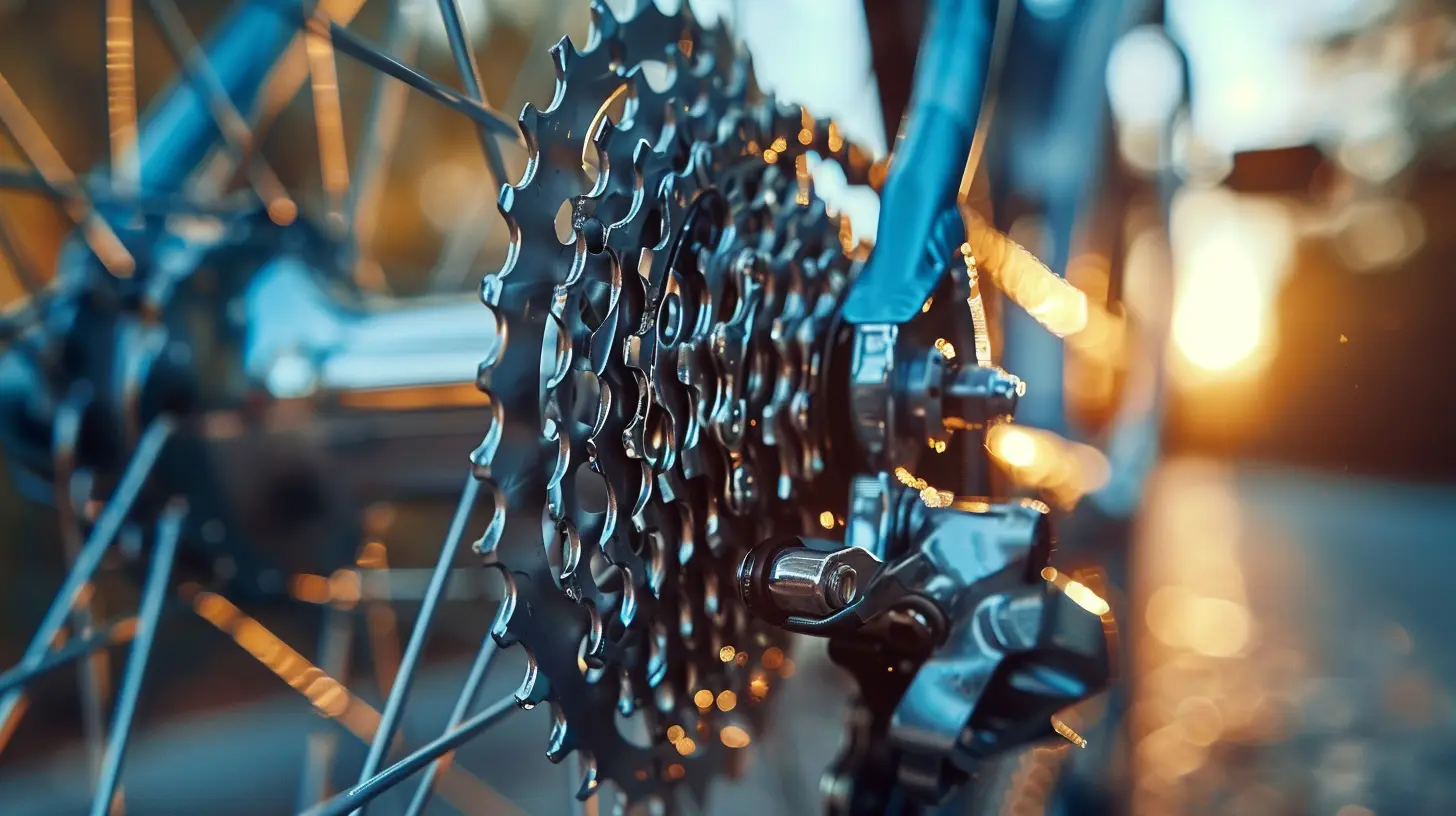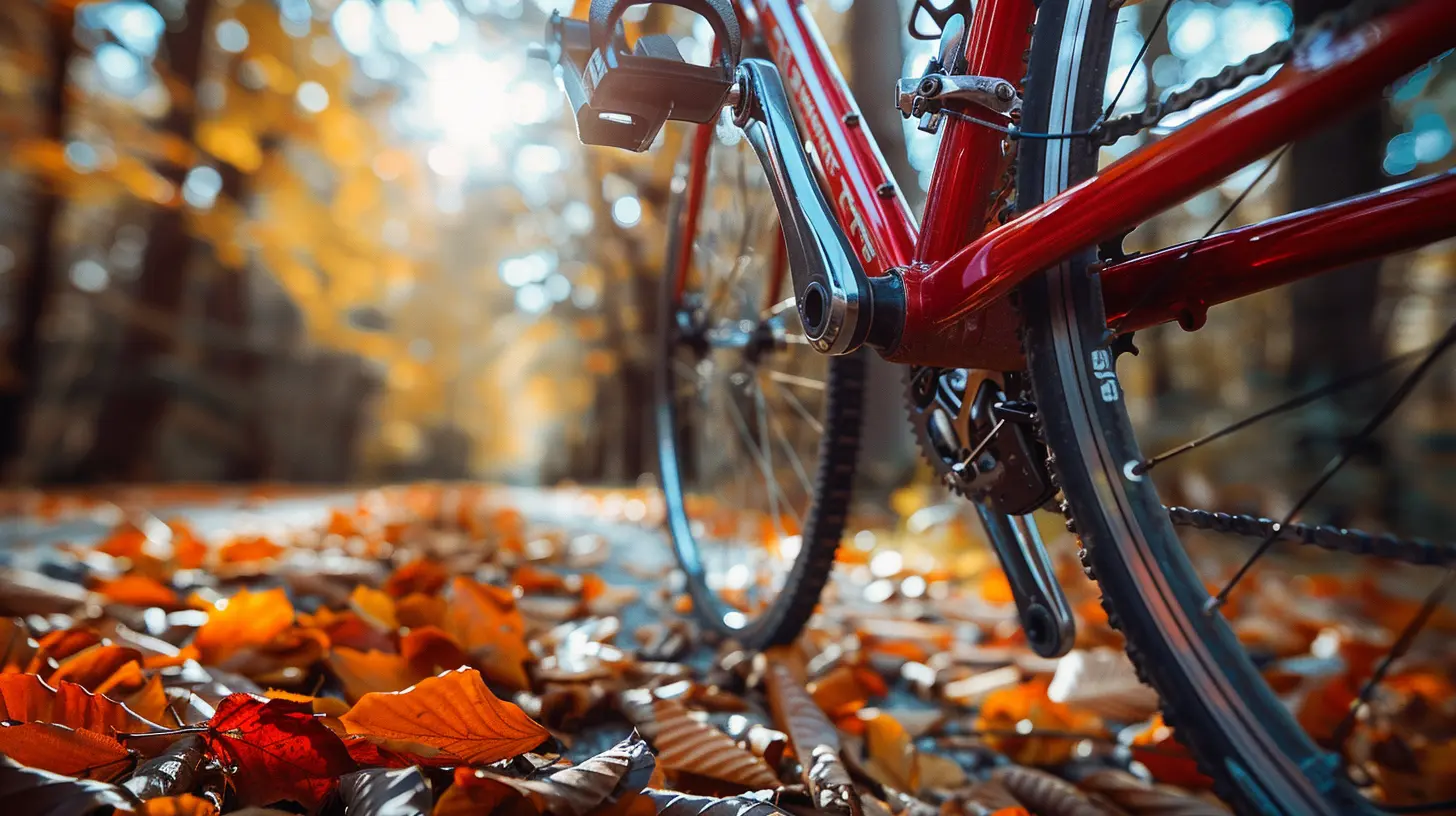Understanding Bicycle Gear Systems for Optimal Riding Experience
23 August 2025
If you've ever felt like your bike was working against you instead of with you, chances are you’ve bumped heads with your gear system. You're not alone—gears can be a bit of a mystery, especially when all you want is a smooth ride. Whether you're just getting into cycling or you've been riding for years but still haven’t quite cracked the code on shifting, this guide is here to help.
Let's dive into the ins and outs of bicycle gear systems so you can ride smarter, not harder.
🚴 Why Do Bicycles Have Gears Anyway?
Ever tried climbing a steep hill in a high gear? It’s like trying to push a boulder uphill with a toothpick. Gears help you adapt. Simply put, bicycle gears allow you to adjust your pedaling effort to match the terrain.Think of it like walking: you might take long strides on a flat road, but when you're headed uphill, shorter, quicker steps make things easier. Gears let your bike do that automatically (well, with a little manual help from you).
⚙️ The Basics: What Is a Bicycle Gear System?
A bicycle gear system is made up of different-sized sprockets (the spiky wheels the chain moves over), derailleurs (those little arms that shift your chain), and shifters (usually mounted on your handlebars).There are two main types:
- Internal gear hubs (sealed, lower maintenance, often found on city bikes)
- Derailleur gear systems (external, more common on road and mountain bikes)
Most riders use derailleur systems because they're lighter and offer more gear range. But if you’re after simplicity, internal gears are your friend.
🧩 Breaking Down the Components
Let’s dissect the parts of a derailleur system so you really get how each piece plays its part.1. Chainrings (Front Gears)
Located by your pedals, these usually come in singles, doubles, or triples. More chainrings mean a wider gear range, but also more complexity. One chainring keeps things simple; three gives you lots of options.2. Cassette (Rear Gears)
Mounted on the back wheel, this is where the magic happens. More sprockets = more gears. Nowadays, 10, 11, or even 12-speed cassettes are common.3. Derailleurs
The front derailleur shifts the chain between chainrings. The rear one moves it across the cassette. These are the unsung heroes of gear shifting.4. Shifters
These are your controls—twist grips, trigger shifters, or integrated brake/shift levers. They send the message to your derailleurs: "Hey, move the chain!"
🧠 Understanding Gear Ratios
Okay, this part might sound a bit geeky, but bear with me—it’s useful.Gear ratio is basically the size relationship between the front chainring and the rear cog. If you have a 50-tooth chainring and a 25-tooth cog, that's a 2:1 ratio. So for every one turn of the pedals, your wheel spins twice.
- High gear: Big front ring + small rear cog = more speed, less torque. Great for flat roads.
- Low gear: Small front ring + big rear cog = less speed, more torque. Ideal for hills.
Think of high gear like a high-speed train—fast but slow to start. Low gear? That’s your off-road 4x4, getting you up the mountain.
🔄 When and How to Shift Gears
Knowing when and how to shift is just as important as knowing what gears do. Make the wrong move, and you could be grinding gears or worse, dropping the chain.Here’s the golden rule: shift before you need to.
- Approaching a hill? Shift into a lower gear before you get there.
- Feeling like you're pedaling air on a flat stretch? Time to shift up.
Also, don't shift under heavy pressure. Ease up on the pedals just a bit while shifting to help the chain move smoothly.
And here's a little tip from seasoned cyclists: avoid cross-chaining. That means don’t ride in the extreme gear combinations like big chainring + big cog or small chainring + small cog. It wears out your chain and hurts your bike’s feelings.
🌄 Matching Gears to Terrain
Let’s look at some real-world situations and figure out how gears can help you tackle them with confidence.Climbing Hills
Use a low gear—small chainring in front, large cog in back. You’ll spin faster but with less effort, so your legs don't feel like they're being crushed by gravity.Descending
Go for a high gear—big ring in front and small cog in back. This keeps your pedaling efficient and lets you control your speed better.Flat Roads
Mid-range gears work best here. You don’t need crazy speed or torque, just a balanced cadence (pedal rhythm) to keep things smooth.🛠️ Gear Maintenance: Keep Things Running Like Butter
Gears are like a well-choreographed dance. But if one dancer slips, the whole performance goes sideways.Here’s what to keep an eye on:
- Chain lubrication: A dry or rusty chain won’t shift properly and wears your gears faster.
- Cable tension: Over time, cables stretch. If your shifting gets sluggish, you might just need a quick cable adjustment.
- Clean those cogs: Dirt and grime can gunk up the performance, so give your drivetrain a clean-up now and then.
Pro tip: Listen to your bike. Clicking, grinding, or delayed shifting? That’s your ride crying for attention.
💡 Choosing the Right Gear Setup for You
So, how many gears do you really need?That depends on your riding style:
- Casual city rider? A bike with 1x7 (one front gear, seven rear) should do just fine.
- Weekend warrior tackling trails? A wider range like 2x10 (two front, ten rear) gives more flexibility.
- Road racer? Go for a 2x11 or 1x12 for lightweight efficiency.
Don’t just go with the flashiest option. Think about your routes, your physical limits, and how much tinkering you’re okay with doing.
🙋 Common Gear Mistakes (We’ve All Been There)
Let’s be real for a sec—everyone messes up gears at some point. Here are a few blunders to keep in mind so you can avoid them:- Shifting under load: Feels like trying to change lanes while flooring the gas. Always ease up a touch.
- Using only one side of the system: You’ve got front and rear gears—use ’em both!
- Ignoring your cadence: Too fast or too slow, and you’re wasting energy. Aim for a steady rhythm (around 80–90 RPM is a good target).
🧘 Final Thoughts: Gears Are Your Friends
Look, gears might seem complicated at first, but really, they’re just there to make your ride better. Smoother, faster, easier. Once you take the time to understand how they work and when to use them, riding becomes a much more enjoyable experience.It’s like learning to dance with your bike. At first, you step on each other's toes. But soon, it's a perfect waltz through whatever road lies ahead.
So next time you head out, pay attention to your gear shifts. Experiment. Get a feel for what works. Trust me, your legs (and your bike) will thank you.
Happy riding, my friend.
all images in this post were generated using AI tools
Category:
Sports EquipmentAuthor:

Uziel Franco
Discussion
rate this article
1 comments
Laila West
Great insights on gear dynamics!
September 6, 2025 at 11:43 AM

Uziel Franco
Thank you! I'm glad you found the insights helpful!


